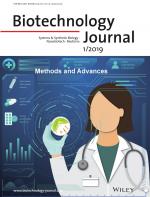Cross-Section and Staining-Based Techniques for Investigating Organic Materials in Painted and Polychrome Works of Art: A Review.
- Citation:
- Sandu, ICA, Schäfer S, Magrini D, Bracci S, Roque ACA. 2012. Cross-Section and Staining-Based Techniques for Investigating Organic Materials in Painted and Polychrome Works of Art: A Review.. Microscopy and Microanalysis. 18(4):860-875.
Abstract:
The article presents a review of the use of cross-section and staining techniques for investigating natural organic materials (mainly proteinaceous and oil-based binders/varnishes) in painted and polychrome artworks, considering the requirements of conservation practice and routine diagnostics. The reviewed literature calls attention to the importance of using cross sections to prepare samples for optical microscopy and to different properties of embedding resins; the most appropriate instrumental conditions for optical microscopy; and the advantages and disadvantages of the most common staining techniques. A few case studies were selected to illustrate the use of autofluorescence (intrinsic fluorescence) and induced fluorescence (using specific staining tests and fluorophore-labeled antibodies) for mapping and identifying organic paint materials in cross sections. New directions of research in cross-section analyses and fluorescence-based techniques for the identification and mapping of artistic materials are presented. The complementary use of different stains on the same cross section, further exploration of intrinsic and induced fluorescence of aged versus fresh materials, and applicability of cross-section observation and staining as complementary methods for assessing the effectiveness of restoration treatments, such as cleaning and consolidation, are discussed in the last section of the article.







